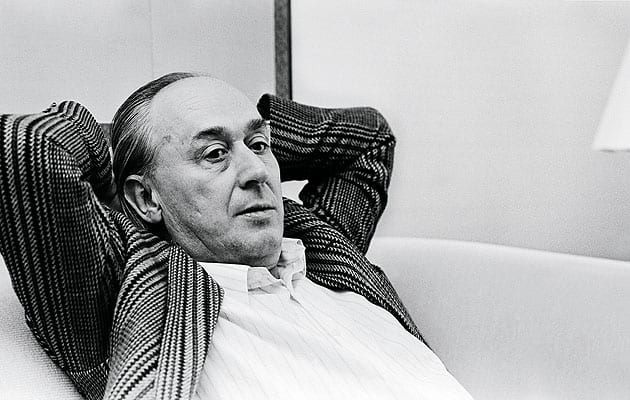|
JG Ballard (image: Bettmann/Corbis) |
||
|
With the death of JG Ballard in April, modern architecture lost one of its strangest and most powerful advocates. Strange, because many of his novels look like attacks on built modernity. The Atrocity Exhibition, the 1969 book that established Ballard’s literary reputation, is a vivid, harrowing collage in which freeways, concrete towers and multistorey car parks are intercut with flashes of sexual violence and popular culture. This imagery was returned to in depth and force in the infamous 1973 follow-up Crash. The modern cityscape is at the centre of subsequent novels. In High-Rise, inhabitants of a luxury tower block devolve into warring tribes. In Concrete Island, a man is stranded on a reservation between motorways and turns savage. Running Wild, Cocaine Nights and Super-Cannes explore the darkness that ferments inside gated communities, and in Kingdom Come, the controlled environment of an out-of-town shopping centre becomes an incubator for fascism. But Ballard loved modern architecture. His favourite building in London was Michael Manser’s 1992 Hilton hotel at Heathrow airport – a slab of international style with a dizzying glass atrium. “Sitting in its atrium one becomes, briefly, a more advanced kind of human being,” he told Hans Ulrich Obrist in 2003, echoing Marc Augé’s message that antiseptic non-places, in particular hotels and airports, give us a glimpse of an anonymous future city-world. By contrast, Ballard dismissed the rest of London as a stucco-choked instrument of political control and class repression, possibly the only world capital “that has gone from the 19th century to the 21st without experiencing all the possibilities and excitements of the 20th in any meaningful way”. It was the modernist attempt to dispose of all this baggage of class, history, received wisdom and social prejudice that Ballard admired. In in-between spaces and non-places, Ballard saw an architecture that appealed to the immediate here and now, the instant, as opposed to bowing towards some abstract posterity or an idea of taste. We are at our most free in the non-place, the atrium, the departure lounge, on the motorway. There, it doesn’t matter who you are – the only thing that matters is where you’re going. And that’s precisely why the authorities are so desperate to monitor us in those places. Being able to leave behind who we are also means that we are freer to indulge psychosis and sexual outrage – but that was no argument to remain unfree. Writing about architecture in 2006, Ballard mentioned the demolition of the Pruitt-Igoe housing project in St Louis in 1972, an event often cited as heralding the death of modernism. The estate had been condemned as a “social catastrophe”: “However, I sometimes think that social catastrophe was what the dirt-poor residents secretly longed for.” Our inner urge towards destruction is Ballard’s stock in trade. The architectural criticism in Ballard’s novels amounts to a stress-test for the human spirit, just as an engineer might test a steel frame to destruction. He shows that what we think of as “normal” activities and environments are anything but – that we are constantly pioneers in our own relentlessly strange world. Our surroundings define us, and in turn our neuroses shape our surroundings. He probed, more intimately than any other writer, a fundamental question: how can we be free when we cannot escape our containers – that is, our bodies and places? |
Words William Wiles |
|
|
||




















